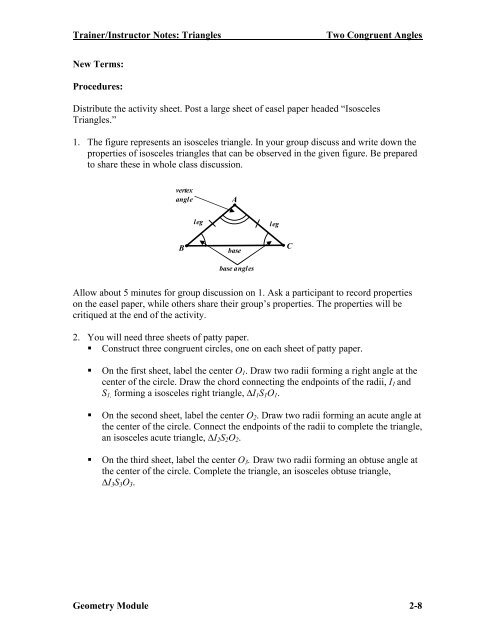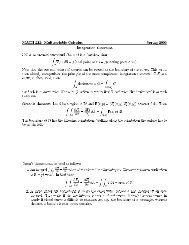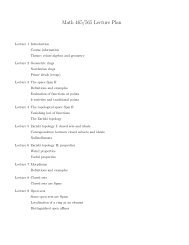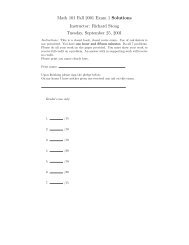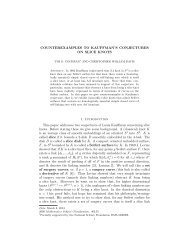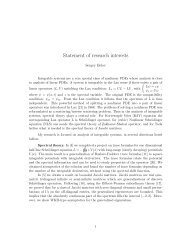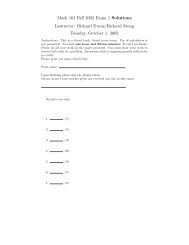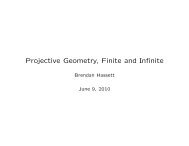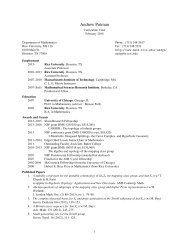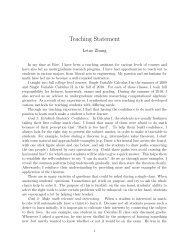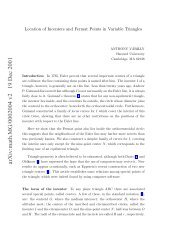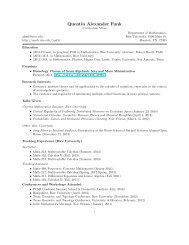Unit 2 - Triangles Equilateral Triangles
Unit 2 - Triangles Equilateral Triangles
Unit 2 - Triangles Equilateral Triangles
Create successful ePaper yourself
Turn your PDF publications into a flip-book with our unique Google optimized e-Paper software.
Trainer/Instructor Notes: <strong>Triangles</strong> Two Congruent Angles<br />
New Terms:<br />
Procedures:<br />
Distribute the activity sheet. Post a large sheet of easel paper headed “Isosceles<br />
<strong>Triangles</strong>.”<br />
1. The figure represents an isosceles triangle. In your group discuss and write down the<br />
properties of isosceles triangles that can be observed in the given figure. Be prepared<br />
to share these in whole class discussion.<br />
vertex<br />
angle<br />
B<br />
leg<br />
Allow about 5 minutes for group discussion on 1. Ask a participant to record properties<br />
on the easel paper, while others share their group’s properties. The properties will be<br />
critiqued at the end of the activity.<br />
2. You will need three sheets of patty paper.<br />
Construct three congruent circles, one on each sheet of patty paper.<br />
A<br />
base<br />
base angles<br />
On the first sheet, label the center O1. Draw two radii forming a right angle at the<br />
center of the circle. Draw the chord connecting the endpoints of the radii, I1 and<br />
S1, forming a isosceles right triangle, ∆I1S1O1.<br />
On the second sheet, label the center O2. Draw two radii forming an acute angle at<br />
the center of the circle. Connect the endpoints of the radii to complete the triangle,<br />
an isosceles acute triangle, ∆I2S2O2.<br />
On the third sheet, label the center O3. Draw two radii forming an obtuse angle at<br />
the center of the circle. Complete the triangle, an isosceles obtuse triangle,<br />
∆I3S3O3.<br />
Geometry Module 2-8<br />
leg<br />
C


